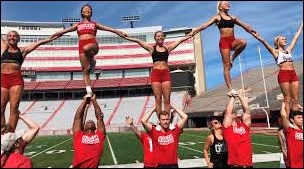The history of the sport of cheerleading tells that the sport started as males only. As reported by the University of Minnesota cheer team in 1923, “women were permitted to participate.” This is one of few official reports of female involvement until the early 1940s when male university students were scarce because of World War II. This created an opportunity for women to make their way onto sidelines of male dominated field sports.
By the 1950s, apparently the girls had taken over and cheerleading had become a female occupation. There was explosive growth in the sport during the 1950s and cheerleading could be found at almost every school across the United States. The male-female composition of teams varied. Some considered cheerleading to be a feminine activity even though boys were included. By the 1970s, cheer historian Randy Neil reported that 95 per cent of American cheerleaders were female.
Despite the unbalanced involvement of the genders, there are still co-ed divisions at all cheerleading competitions. It is recognized that having male bases does give a team an advantage in stunting. Male gymnasts who cross over to cheerleading at the college level are consistently crowd-pleasers because of their amazing tumbling skills.
It is also interesting to note that the involvement of females in other sports has increased parallel to cheerleading. Whereas, in the beginning the girls were cheering for the male athletes on the field, in the 1970s school sport culture was seeing girls take over the field and the court. The development of all-female teams led to having female cheerleaders cheering for all-female sport teams.



